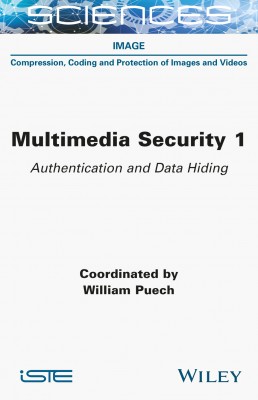
Today, more than 80% of the data transmitted over networks and archived on our computers, tablets, cell phones or clouds is multimedia data – images, videos, audio, 3D data. The applications of this data range from video games to healthcare, and include computer-aided design, video surveillance and biometrics.
It is becoming increasingly urgent to secure this data, not only during transmission and archiving, but also during its retrieval and use. Indeed, in today’s “all-digital” world, it is becoming ever-easier to copy data, view it unrightfully, steal it or falsify it.
Multimedia Security 1 analyzes the issues of the authentication of multimedia data, code and the embedding of hidden data, both from the point of view of defense and attack. Regarding the embedding of hidden data, it also covers invisibility, color, tracing and 3D data, as well as the detection of hidden messages in an image by steganalysis.
1. How to Reconstruct the History of a Digital Image, and ofItsAlterations, Quentin Bammey, Miguel Colom, Thibaud Ehret, Marina Gardella, Rafael Grompone, Jean-Michel Morel, Tina Nikoukhah and Denis Perraud.
2. Deep Neural Network Attacks and Defense: The Case of ImageClassification, Hanwei Zhang, Teddy Furon, Laurent Amsaleg and Yannis Avrithis.
3. Codes and Watermarks, Pascal Lefèvre, Philippe Carré and Philippe Gaborit.
4. Invisibility, Pascal Lefèvre, Philippe Carré and David Alleysson.
5. Steganography: Embedding Data Into Multimedia Content, Patrick Bas, Rémi Cogranne and Marc Chaumont.
6. Traitor Tracing, Teddy Furon.
7. 3D Watermarking, Sébastien Beugnon, Vincent Itier and William Puech.
8. Steganalysis: Detection of Hidden Data in Multimedia Content, Rémi Cogranne, Marc Chaumont and Patrick Bas.
William Puech is Professor of Computer Science at Université de Montpellier, France. His research focuses on image processing and multimedia security in particular, from its theories to its applications.